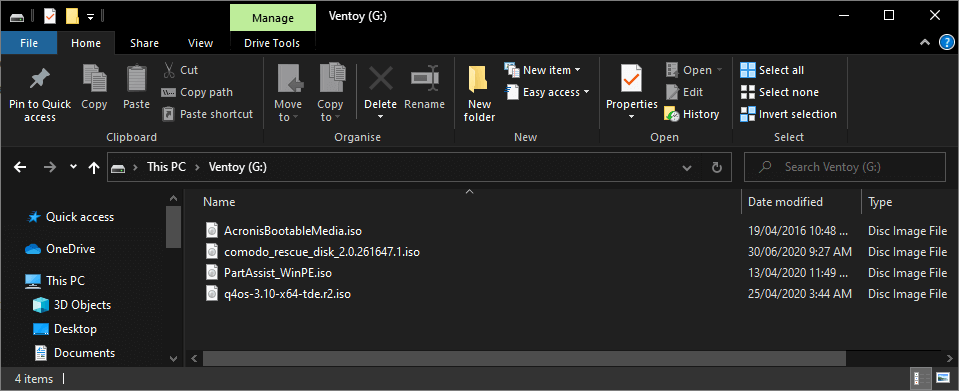
Refer the following guide to learn different ways to find disk drive details in Linux. Create Multiboot USB Drive Using Ventoy CLIįirst, you need to find your USB drive name. It supports Linux, manOS and Windows.Ĭreate Multiboot USB Drives With Ventoy In LinuxĪs I mentioned already, Ventoy is available as CLI, native GUI and Web-GUI versions. Supports theme and menu style customization.Available as CLI, native GUI and Web-based GUI.Native boot menu style for Legacy & UEFI.In this mode, Ventoy will load the whole ISO file into memory and then boot it. To add a new OS, just copy/paste the ISO into the USB drive.No need to update Ventoy when a new distro is released.Data nondestructive during version upgrade. Upgrade Ventoy when a new version is available without recreating the bootable USB drive again.Meaning - you can use the USB drives for other purposes (E.g. The normal usage of USB drives is unaffected.No need to create a new ISO file, just use the original ISO. You can also update these scripts at any time. Put a script or template in the USB drive and tell ventoy to use it for unattended installation. For instance, kickstart script for Redhat/CentOS, autoYast xml for SUSE, preseed script for Debian. Meaning - you can add your template or script for unattended deployment. The developer claims more than 900+ ISO files have been tested with Ventoy. Almost all type of OSes are supported.

You can create bootable drives with ISO files larger than 4GB.



Fast (limited only by the speed of copying iso file).Ventoy ships with a lots of useful features as listed below. Create Multiboot USB Drive Using Ventoy Web GUI Create Multiboot USB Drive Using Ventoy GUI Create Multiboot USB Drive Using Ventoy CLI Create Multiboot USB Drives With Ventoy In Linux.


 0 kommentar(er)
0 kommentar(er)
